Abstract Odds ratios (OR) are commonly reported in the medical literature as the measure of association between exposure and outcome However, it is relative risk that people more intuitively understand as a measure of association Relative risk can be directly determined in a cohort study by calculating a risk ratio (RR)This odds ratio–centric view of casecontrol studies can also be seen in epidemiologic textbooks "In a casecontrol study the relative risk cannot be calculated directly" (5, p 8) or, "the primary measure of effect in a casecontrol study is the odds ratioThe odds ratio will only odds ratios can be obtained for studies in which it is be greater than the relative risk if the relative risk is greater than typically not possible to estimate the population at risk, such as one and less than the relative risk otherwise In the example casecontrol studies7 above, if the adjusted odds ratio were

Spring 08 Casecontrol Studies And Odds Ratio Stat
Why odds ratio in case control study
Why odds ratio in case control study-Relationship between odds ratio and relative risk at various levels of baseline risks in the control group (I 0 = 05, 03, 02, 01, 005, and 001)1 I 0, baseline risk of control group Table 2 Comparison of risk difference, risk ratio, and odds ratio based on risks (p) and odds of two competitive groups (assume n = 1,000 per group)Davies et al (1) state that the odds ratio is a common measure in casecontrol studies, cohort studies, or clinical trails Unfortunately, this first sentence of their article is not correct For different study designs, OR should only be used as a measure of effect size when RR can not be estimated directly
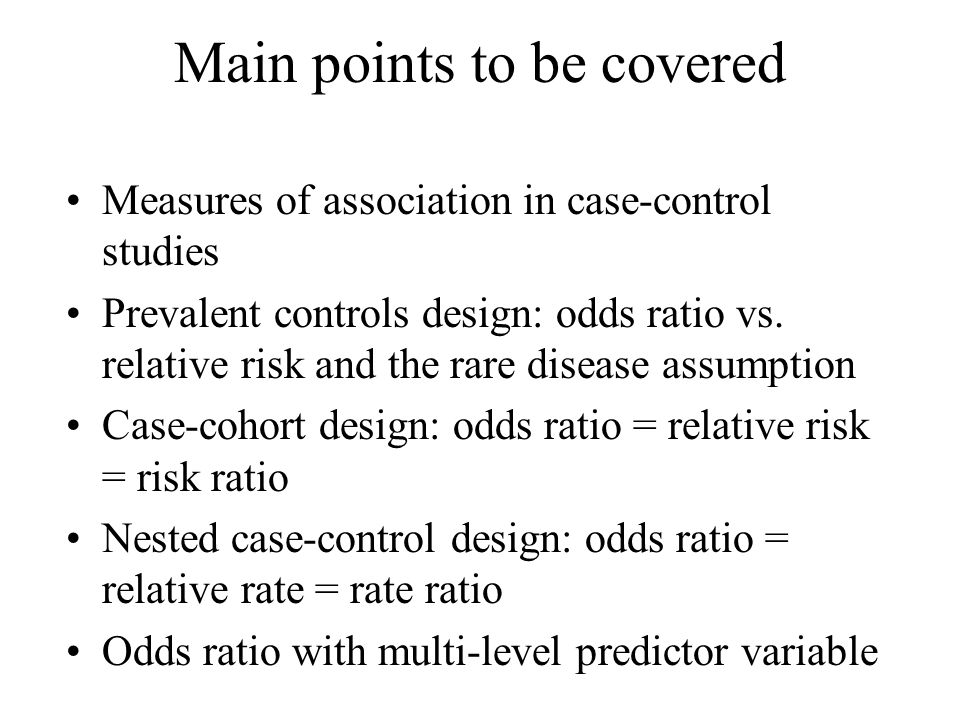



Main Points To Be Covered Measures Of Association In Case Control Studies Prevalent Controls Design Odds Ratio Vs Relative Risk And The Rare Disease Ppt Download
Vauxhall (S&V) and Lambeth (L) S&V Population # Cholera Deaths 3706 L Poulation # Choleta Deaths 411 Sampling Distribution of RR &Odds ratios are intended for use in casecontrol studies in which they are an appropriate measure for estimating the relative risk;The probability of PONV with no Drug X is 40/100 or 040 Therefore, the relative risk for PONV with Drug X vs PONV without Drug X is 0/040 = 05 Odds ratios are used instead of relative risk for casecontrol studies To be able to calculate relative risk, we compare the risks of outcome in different groups
Odds ratio is calculated for case control studies, while relative risk is for cohort studies, so it depends on the study designOdds ratio is always larger than Relative Risk, sometimes a lot larger 2 Odds ratios are only useful in true case control studies, which are done because the true incidence of the disease isRelative Risk CaseControl studies –>
This condition guarantees that the odds ratio will make a good approximation to the relative risk In this example, the event of interest is a response to the mailing The design of the study is case control This condition signals that the usual estimate of the relative risk will likely not be good A casecontrol study is retrospective, mostThe Odds Ratio The relative exposure distributions (7/6) and (10/56) are really odds, ie the odds of exposure among cases and nondiseased controlsIf we compute the ratio of these two odds we would get ie, almost identical to the risk ratio we calculated when we had all the information for the source groupTo understand why the risk ratio is not appropriate in the Knoll's study, we consider the example reported in Figure 1, showing that, unlike the OR, the risk ratio among others depends on the number of controls taken for each caseAs shown in Figure 1 (left panel), the risk ratio for arteriovenous fistula thrombosis results to be 65% higher (risk ratio=165) in patients with




A Practical Overview Of Case Control Studies In Clinical Practice Chest




Evidence Of Safety Pooled Relative Risk Rr Or Odds Ratio Or And Download Table
Adjusted odds ratios for casecontrol studies with missing confounder data in controls but the data are insufficient to produce an adjusted estimate of the relative risk if confounding is found to be present We illustrate the technique with data from a nested casecontrol study of the risk of acute cardiac death associated with the useCc chd69 bage_50 // for casecontrol study (to obtain estimated OR) Proportion relative risk (and odds ratio) can remain large • As the risk becomes common (>Key Concept In a study that is designed and conducted as a casecontrol study, you cannot calculate incidence Therefore, you cannot calculate risk ratio or risk difference You can only calculate an odds ratio However, in certain situations a casecontrol study is




Flowchart Of Study Selection Process Hr Hazard Ratios Or Odds Download Scientific Diagram




How To Interpret And Use A Relative Risk And An Odds Ratio Youtube
Could someone explain why odds ratios are used in case control studies where as relative risk is used in RCT and cohort studies?Odds ratio is similar to relative risk In the sheepskin trial the relative risk was 058 and the odds ratio was 054 For most clinical trials where the event rate is low, that is less than 10% of all participants have an event, the odds ratio and relative risk can be considered interchangeableIn such cases, the odds ratio should be avoided, and the relative risk will be a more accurate estimation of risk Commonly, odds ratios will be reported in casecontrol studies, in which relative risks cannot be calculated
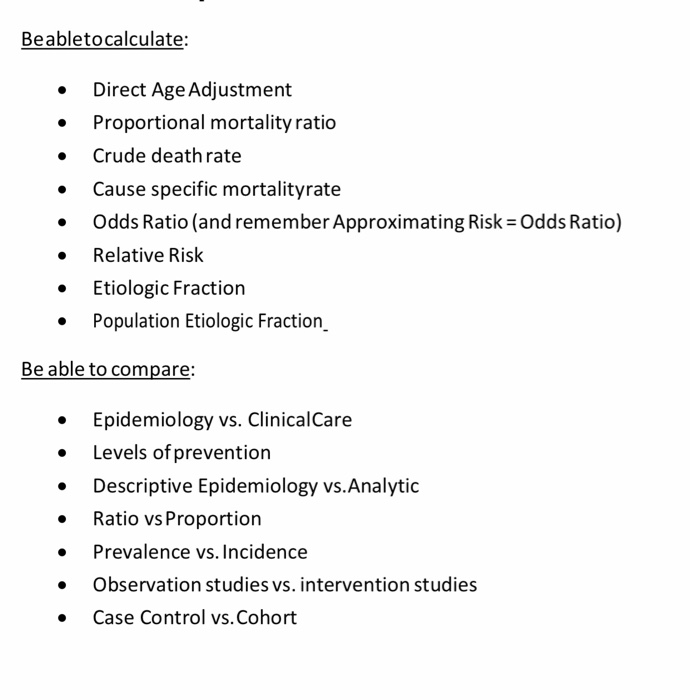



Beabletocalculate Direct Age Adjustment Chegg Com




Cohort And Case Control Research Ppt Video Online Download
When you estimate the risk in a casecontrol study, you estimate the likelihood of having the exposure in those who have the disease, relative to those who do not Now, I will work through an example of how to calculate and interpret the odds ratio in a case control study, examining the association between smoking and lung cancerWhen the risk ratio cannot be obtained directly (such as in a casecontrol study), the odds ratio is calculated and often interpreted as if it were the risk ratio Subsequently, the term relative risk commonly refers to either the risk ratio or the odds ratio However, only under certain conditions does the odds ratio approximate the risk ratio Figure 1 shows that when the incidenceOdds ratio (OR) is measure of disease association OR = odds of exposure among cases/odds of exposure in noncases = ad/bc Relative risk (RR)




What Is An Odds Ratio And How Do I Interpret It Critical Appraisal
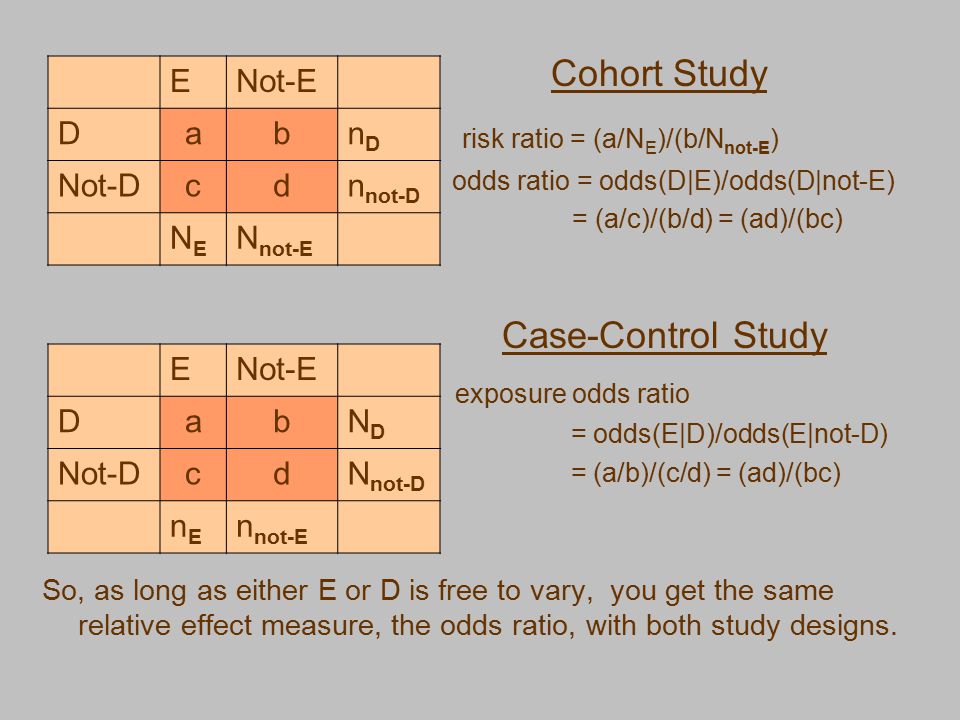



Case Control Studies Statistical Analysis Ppt Video Online Download
OR Goal Obtain Empirical Sampling Distributions of sample RR and OR and observe2) Relative Risk and Odds Ratio for the nonobese Relative Risk and Odds Ratio for the obese 3) Overall, you can see that decreasing the baseline incidence will decrease the odds ratio (300 in those who are nonobese versus 129 in those who are obese) Obviously, these results run counterCasecontrol studies can not calculate incidences or prevalences They can, however, calculate exposure odds ratios 2 1 1 2 A B AB ˆOR = This statistic, which is just the crossproduct ratio of the entries in the 2by2 table, is an estimate of the relative incidence (relative risk) of the outcome associated with exposure




Using Odds Ratio In Case Control Studies Youtube
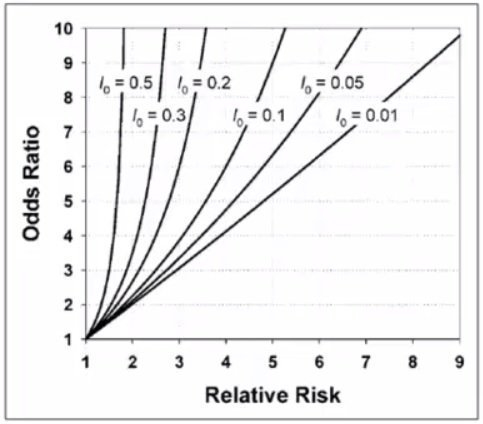



Cecile Janssens A Reminder That Odds Ratios Massively Overestimate Relative Risks When Outcome Is Common In The Population Or By Study Design E G Case Control Studies Io Is Proportion Of Cases
The key difference being, for odds ratio, one needs to know the conditional probabilities $P(I N), P(C N)$, which are known in case control studies;I understand that odds ratio is the ratio is the odds of two groups (ie positive outcomes/negative outcomes), where as relative risk is the ratio of risk of two groups (ie positive outcomes/all outcomes)In a casecontrol study, it is said that we can approximate relative risk(RR) by odds ratio(OR) when the disease is rare $OR$ = $\frac{\frac{p_1}{1p_1}}{\frac{p_2}{1p_2}}$ = $\frac{p_1}{p_2}$$\frac{1p_2}{1p_1}$ = $ RR $ $\frac{1p_2}{1p_1}$ But there is one thing that I do not understand




Relative Risk Wikipedia




Frontiers Odds Ratio Or Prevalence Ratio An Overview Of Reported Statistical Methods And Appropriateness Of Interpretations In Cross Sectional Studies With Dichotomous Outcomes In Veterinary Medicine Veterinary Science
There are 2 main measures of association commonly used in epidemiology the risk ratio/rate ratio (relative risk) and the odds ratio The former is calculated for study designs that collect data on incidence cohorts and RCTs The latter is calculated for study designs that use prevalent cases crosssectional studies and casecontrol studiesThe relative risk (RR) and the odds ratio (OR) are the two most widely used measures of association in epidemiology The direct computation of relative risks isAn odds ratio of 112 means the odds of having eaten lettuce were 11 times higher among casepatients than controls Because the odds ratio is greater than 10, lettuce might be a risk factor for illness after the luncheon The magnitude of the odds ratio



1




Calculation Of Relative Risks Rr And Odd Ratios Or Download Table
Or population of interest The relative risk (RR) is the risk of the event in an experimental group relative to that in a control group The odds ratio (OR) is the odds of an event in an experimental group relative to that in a control group An RR or OR of 100 indicates that the risk is comparable in the two groupsQuote Relative Risk For casecontrol studies quote Odds Ratio Odds Ratio approximates Relative Risk for a rare disease in casecontrol studies For a crosssectional study one has a choice between Odds Ratio and Relative Risk 36The relative risk (also known as risk ratio RR) is the ratio of risk of an event in one group (eg, exposed group) versus the risk of the event in the other group (eg, nonexposed group) The odds ratio (OR) is the ratio of odds of an event in one group versus the odds of the event in the other group
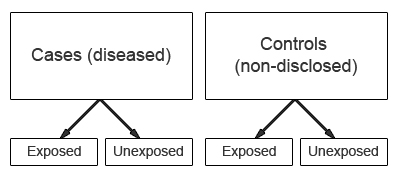



Introduction To Study Designs Case Control Studies Health Knowledge
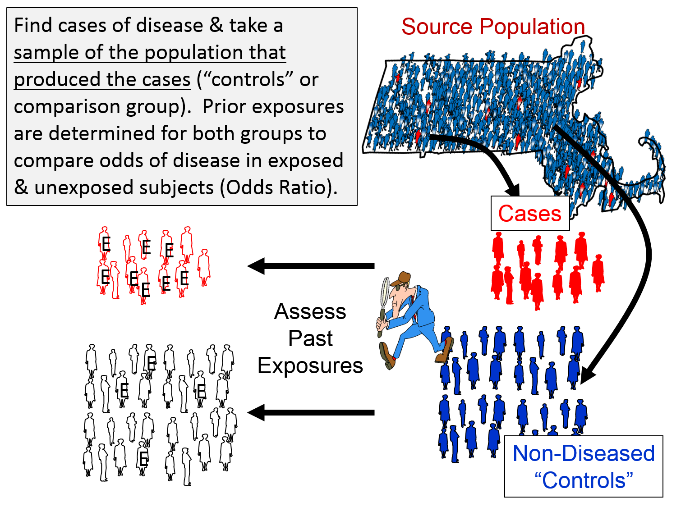



A Nested Case Control Study
In our example above, p wine and p no_wine were 0009 and 0012 respectively, so the odds ratio was a good approximation of the relative risk OR = 0752 and RR = 075 If the risks were 08 and 09, the odds ratio and relative risk will be 2 very different numbers OR = 044 and RR = 0 Relative risk vs Odds ratio SimilaritiesRelative risks and odds ratios are widely reported in the medical literature, but can be very difficult to understand We sought to further clarify these important indices Methods We illustrated both relative risks and odds ratios using bar charts, then looked at the types of study for which each statistic is suitedJump to navigation Jump to search Type of observational study comparing two existing groups differing in outcome Case–control study versus cohort on a timeline OR stands for odds ratio and RR stands for relative risk A case–control study (also known as case–referent study) is a type of observational study in which two existing groups differing in outcome are identified and




1 The Odds Ratio Relative Odds In A Case Control Study We Do Not Know The Incidence In The Exposed Population Or The Incidence In The Nonexposed Population Ppt Download



Case Control Study Odds Ratio Relative Risk Best Custom Academic Essay Writing Help Writing Services Uk Online Homeworknowcomlink Web Fc2 Com
One O has an R (cohORt), which means one group has the risk factor Other O does not have an R (cOhort), which means the other group does not have the risk factor Compare the two to see who gets the disease How to remember that case control studies measure odds ratio and cohort studies measure relative risk You take surgical cases to the OR (Operating room)The risk ratio (or relative risk) is the ratio of the risk of an event in the two groups, whereas the odds ratio is the ratio of the odds of an event (see Box 92a ) For both measures a value of 1 indicates that the estimated effects are the same for both interventionsCasecontrol studies The odds ratio is the measure of association for a casecontrol study It tells us how much higher the odds of exposure is among cases of a disease compared with controls The relative risk is the ratio of the attack rates of



2




Relative And Attributable Risks Absolute Risk Involves People
In epidemiological terms, the odds ratio is used as a point estimate of the relative risk in retrospective studies Odds ratio is the key statistic for most casecontrol studies In prospective studies, Attributable risk or risk difference is used to quantify risk in the exposed group that is attributable to the exposure In retrospective studies, attributable risk can not be calculatedOdds ratios are a common measure of the size of an effect and may be reported in casecontrol studies, cohort studies, or clinical trials Increasingly, they are also used to report the findings from systematic reviews and metaanalyses Odds ratios are hard to comprehend directly and are usually interpreted as being equivalent to the relative riskHowever, this measure is also often presented in cohort studies and in randomized clinical trials




Estimated Relative Risk Odds Ratio Or Hazard Ratio With 95 Ci For 4 Download Scientific Diagram
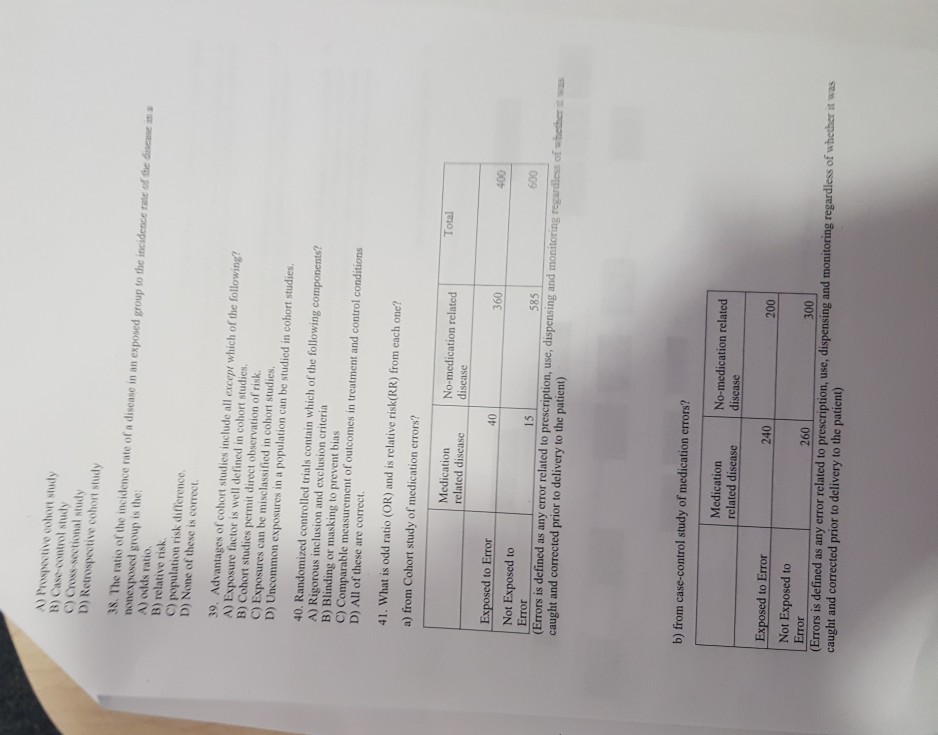



Solved A Prospective Cohort Study B Case Control Study C Chegg Com
CaseControl Study and Odds Ratio Learn How to Estimate the Odds Ratio as a Measure of Association for CaseControl Studies?👉🏼 Learn How to Use R to EstimFor casecontrol trials we use odds ratio to compare the "incidence" of past exposures or treatments Cohort Studies (and clinical trials) –>Whether the estimates are called odds or risk ratios is a matter of style



Relative Risk Wikipedia




Society For Birth Defects Research And Prevention
An odds ratio is a useful measure of association In a cohort study, the relative risk can be calculated directly In a casecontrol study the relative risk cannot be calculated directly, so an odds ratio is used instead Attributable Risk Concept of Attributable Risk Attributable Risk for an Exposed Group Attributable Risk for an Exposed GroupThe odds ratio is a useful measure of association for a variety of study designs For a retrospective design called a casecontrol study, the odds ratio can be used to estimate the relative risk when the probability of positive response is small (Agresti, 02)In a casecontrol study, two independent samples are identified based on a binary (yesno) response variable, and theOdds ratios approximate risk ratios when outcomes are rare in all noteworthy strata used for an analysis When outcomes are rare, all 4 arguments can be ignored This is most useful in casecontrol studies, in which odds ratios can be interpreted as risk ratios;




最新 Odds Ratio Vs Relative Risk Usmle ただの悪魔の画像
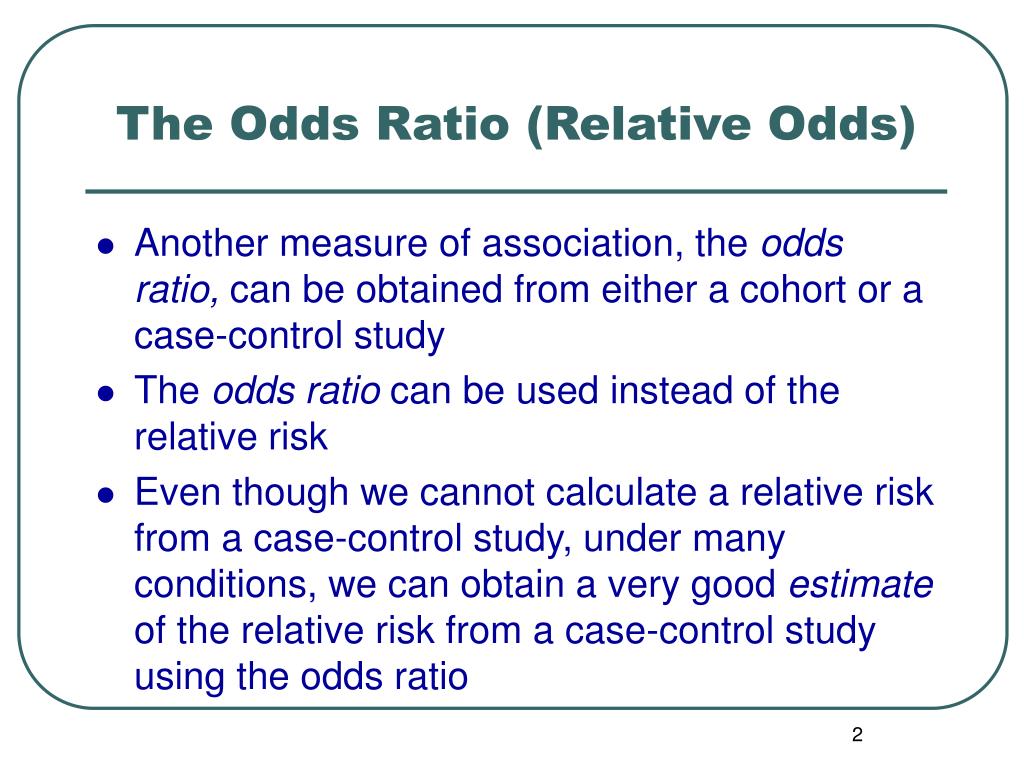



Ppt The Odds Ratio Relative Odds Powerpoint Presentation Free Download Id 6056
Another attractive feature is that the odds ratio can be calculated with data from a casecontrol study, whereas neither a risk ratio nor a rate ratio can be calculated In a casecontrol study, investigators enroll a group of casepatients (distributed in cells a and c of the twobytwo table), and a group of noncases or controls (distributed in cells b and d)CaseControl Study Retrospective (almost always) Compares patients with and without disease to asses their odds of a certain exposure ;10%), the OR greatly overestimates the RR • RR and RD are arguably more interpretable than OR, nevertheless the odds ratio



Definition And Calculation Of Odds Ratio Relative Risk Stomp On Step1



Population Perspective Made Easy On Vimeo
The odds ratio for lettuce was calculated to be 112 How would you interpret the odds ratio?Whereas for relative risk, $P(I), P$ are not known from a retrospective study designIf the relative risk is 1, the tutoring made no difference at all If it's above 1, then the tutored group actually had a higher risk of failing than the controls Odds Ratio The odds ratio is the ratio of the odds of an event in the Treatment group to the odds of an event in the control group




Measures Of Effect Relative Risks Odds Ratios Risk Difference And Number Needed To Treat Sciencedirect
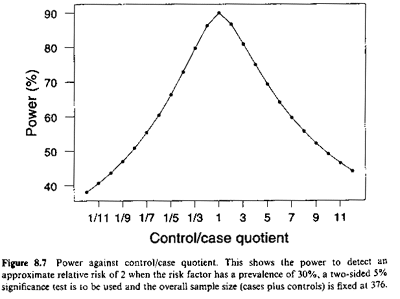



9 5 Example 9 3 Odds Ratios From A Case Control Study Stat 507
Odds Ratio I remember this by thinking about a group of pirates (group = cohort) all saying "aRRrrr!"Odds Ratio – Look to the past, Casecontrol study Relative Risk – Look to the future, Cohort study I hope this helps Please leave a comment if there are any mistakes here or if you have any questionsCase Study Relative Risk and Odds Ratio John Snow's Cholera Investigations Population Information 2 Water Providers Southwark &




Definition And Calculation Of Odds Ratio Relative Risk Stomp On Step1




Observational Studies The Ebm Project




Cohort And Case Con Revised
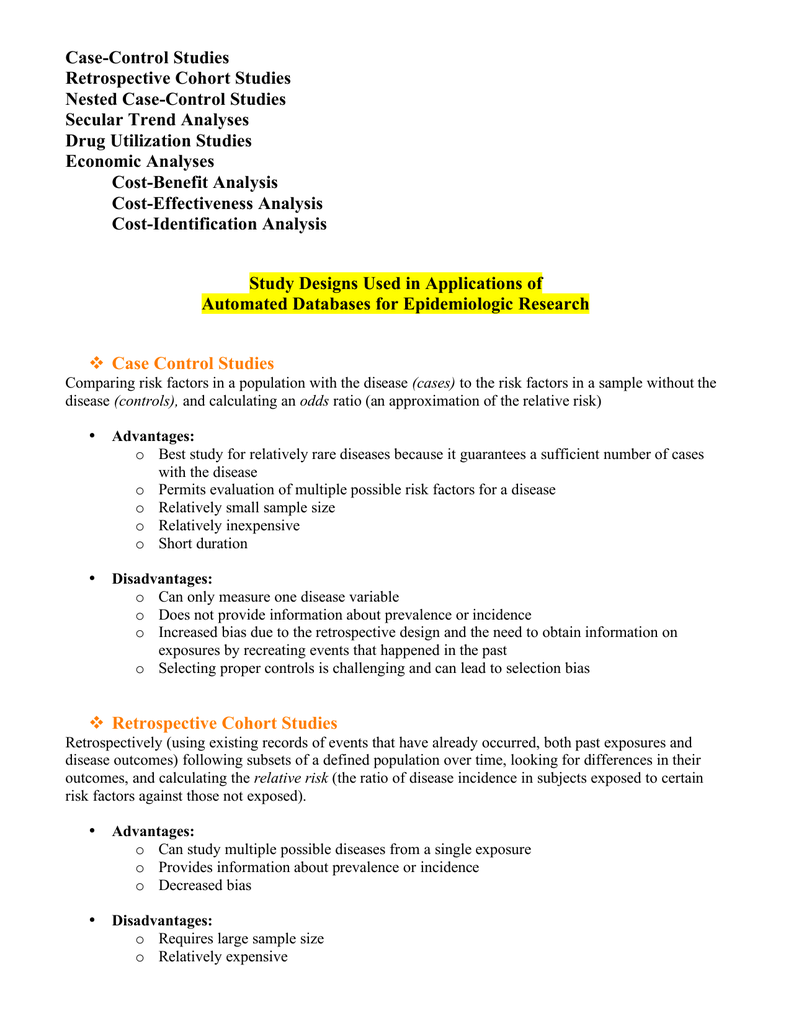



Case Control Studies Retrospective Cohort Studies Nested Case




Definition And Calculation Of Odds Ratio Relative Risk Stomp On Step1




Epidemiology Calculating Relative Risk Youtube




Relative Risk Odds Ratios Youtube
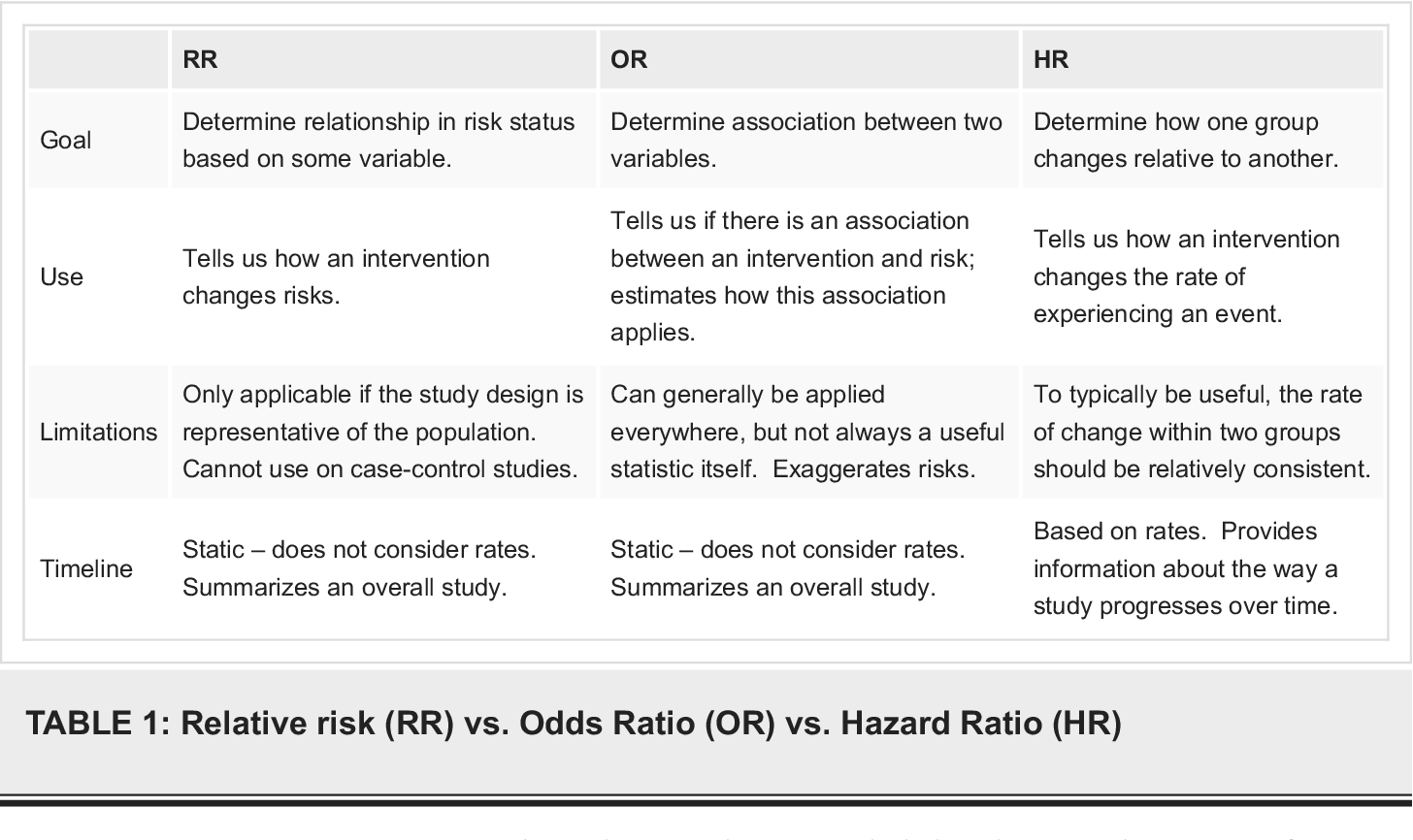



Pdf What S The Risk Differentiating Risk Ratios Odds Ratios And Hazard Ratios Semantic Scholar




A Practical Overview Of Case Control Studies In Clinical Practice Chest




What Is An Odds Ratio And How Do I Interpret It Critical Appraisal




How To Be Awesome At Biostatistics And Literature Evaluation Part Ii Tl Dr Pharmacy




Relative Risks Rrs In Prospective Studies Or Odds Ratios Ors In Download Scientific Diagram




How To Calculate Relative Risk Youtube




Critical Numbers Living With Risk At The End
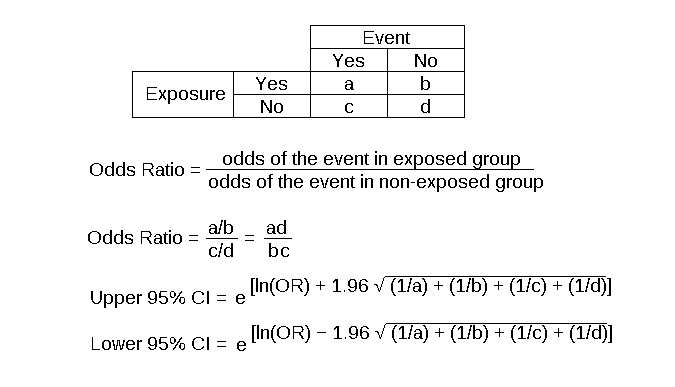



Case Control Studies Article




Relative And Attributable Risks Absolute Risk Involves People




The Difference Between Relative Risk And Odds Ratios The Analysis Factor




Relative Risks Rrs In Prospective Studies Or Odds Ratios Ors In Download Scientific Diagram
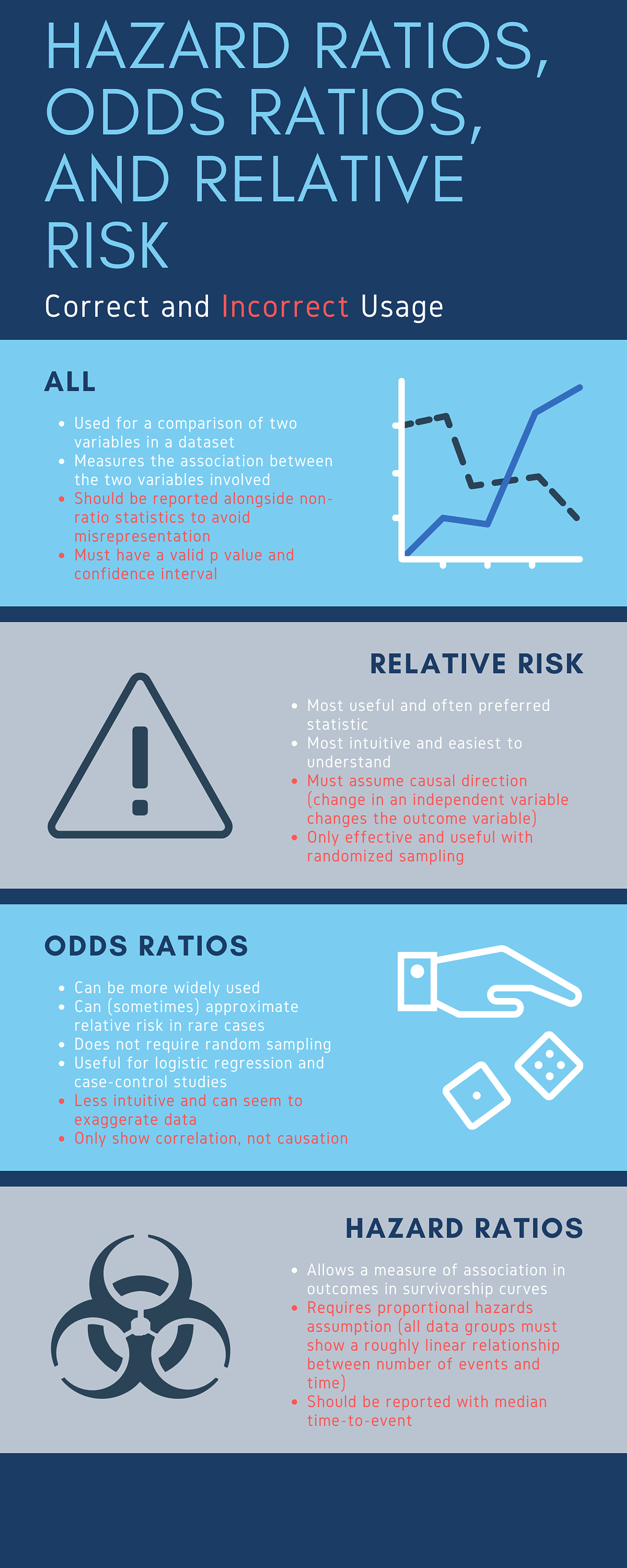



Cureus What S The Risk Differentiating Risk Ratios Odds Ratios And Hazard Ratios



1




Cohort Case Control Studies Http Www Slideshare Net Terryshaneyfelt7 What Does An Odds Ratio Or Relative R Cohort Study Research Methods Academic Research




Spring 08 Casecontrol Studies And Odds Ratio Stat




Case Control Study 8 21 152 Case Control Study Exposure Disease Exposure Disease Ppt Download




Ppt The Odds Ratio Relative Odds Powerpoint Presentation Free Download Id 6056
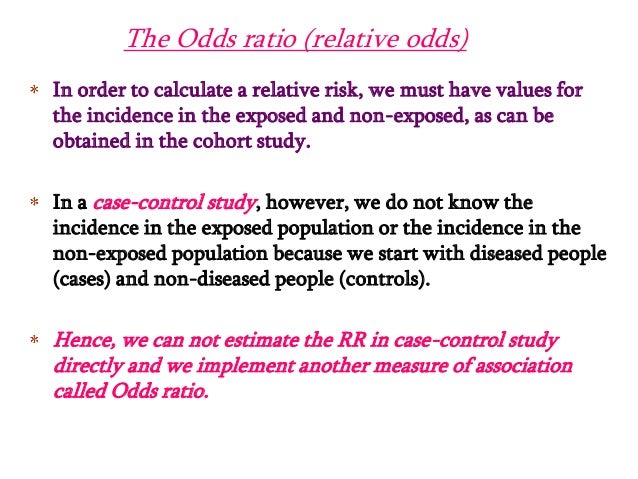



Estimating Risk



2




Using Odds Ratio In Case Control Studies Youtube




Believability Of Relative Risks And Odds Ratios In Abstracts Cross Sectional Study The Bmj
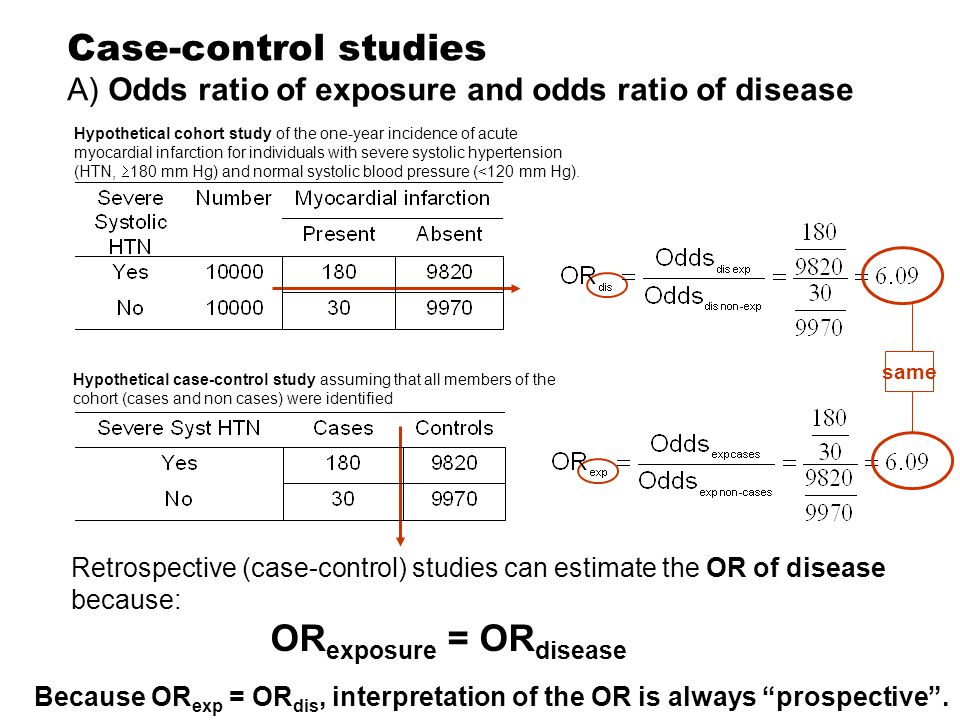



Measures Of Association Ppt Download
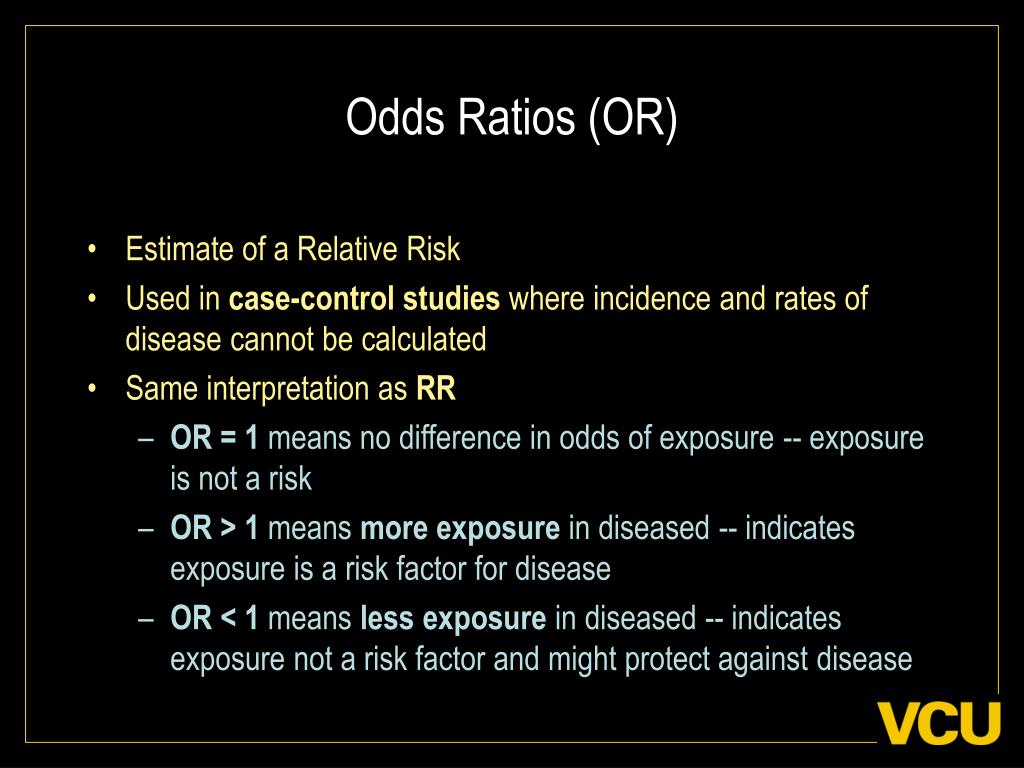



Ppt Lecture Learning Objectives Powerpoint Presentation Free Download Id




Please Fill Out Table 8 Below Using The Results From Chegg Com




Odds Ratio Relative Risk Risk Difference With R R Tutorial 4 11 Marinstatslectures Youtube
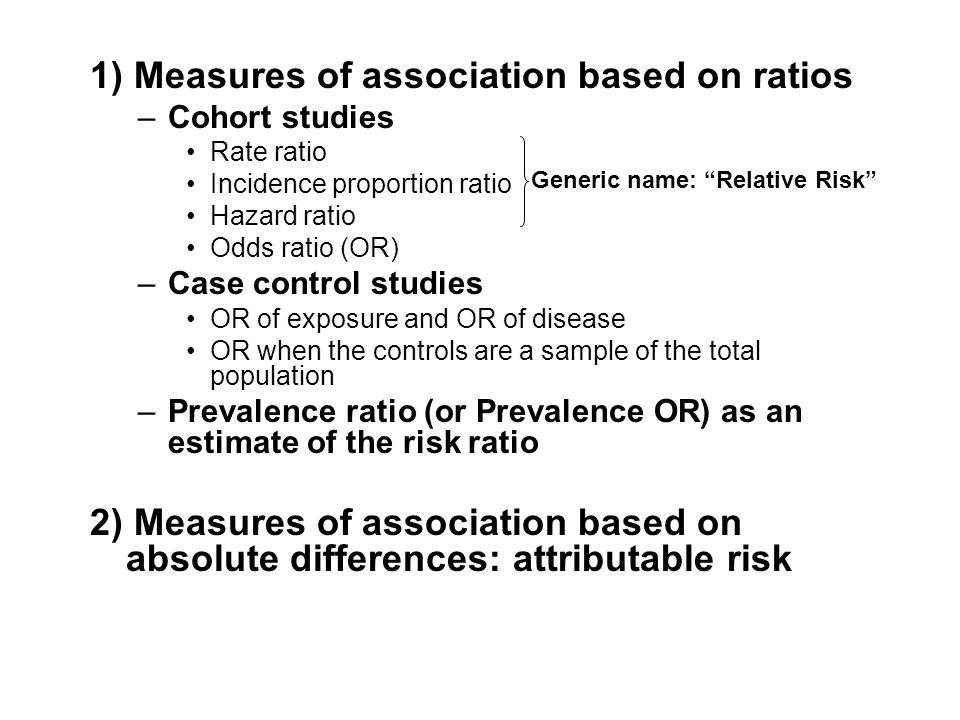



Measures Of Association Ppt Download




The Differences Between A Case Control Study And A Cohort Study Case Control Study Cohort Study Study




Case Control Studies



1
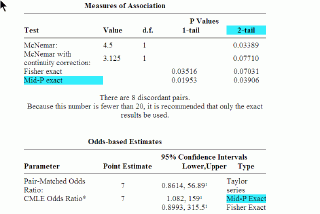



Pair Matched Case Control Table
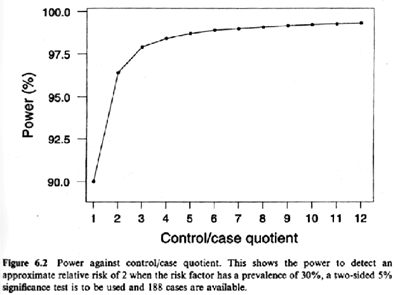



9 5 Example 9 3 Odds Ratios From A Case Control Study




Spring 08 Casecontrol Studies And Odds Ratio Stat




Case Control Study Epidemiology Microbe Notes




How To Calculate An Odds Ratio Youtube



Case Control Study Odds Ratio Relative Risk Best Custom Academic Essay Writing Help Writing Services Uk Online Homeworknowcomlink Web Fc2 Com




A Practical Overview Of Case Control Studies In Clinical Practice Chest



Case Control Study Odds Ratio Relative Risk Best Custom Academic Essay Writing Help Writing Services Uk Online Homeworknowcomlink Web Fc2 Com




Odds Ratio Relative Risk Calculation Definition Probability Odds Youtube




Statistics Part 13 Measuring Association Between Categorical Data Relative Risk Odds Ratio Attributable Risk Logistic Regression Data Lab Bangladesh
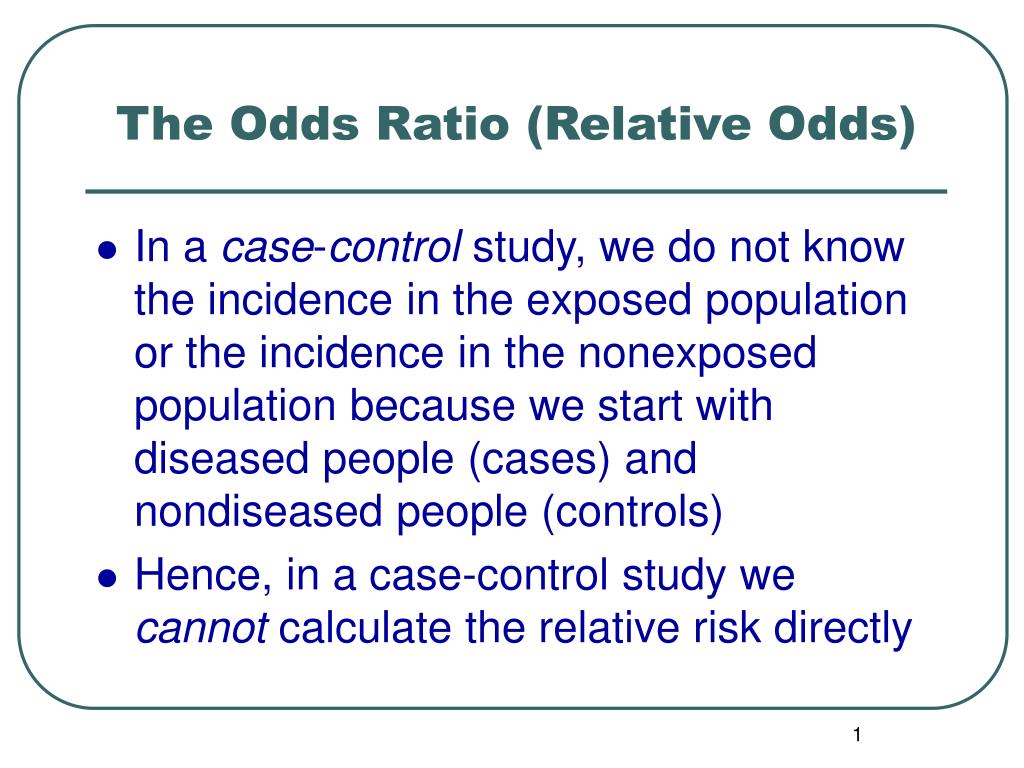



Ppt The Odds Ratio Relative Odds Powerpoint Presentation Free Download Id 6056




Relative Risks Rrs In Prospective Studies Or Odds Ratios Ors In Download Scientific Diagram




Main Points To Be Covered Measures Of Association In Case Control Studies Prevalent Controls Design Odds Ratio Vs Relative Risk And The Rare Disease Ppt Download



Attributable
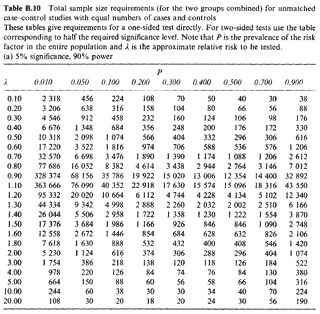



9 5 Example 9 3 Odds Ratios From A Case Control Study




Case Control And Cohort Studies A Brief Overview Students 4 Best Evidence




Relative Risk Or Odds Ratio For Cardiovascular Disease Incidence Download Scientific Diagram



Case Control Studies Howmed




Calculation Of Odds Ratios Or And Relative Risk Rr Derived From Download Scientific Diagram



9 10 11 12 13 14 15 16 17 18 19 21 22 23 24 25 26 27 28 29 30 Review Odds Ratios Are Calculated From Case Control Studies Which Are Described On Slide 14 Odds Ratios Are Only Estimates Of Relative Risks Since True Incidence Rates Cannot Be




Case Control Studies




Relative And Attributable Risks Absolute Risk Involves People
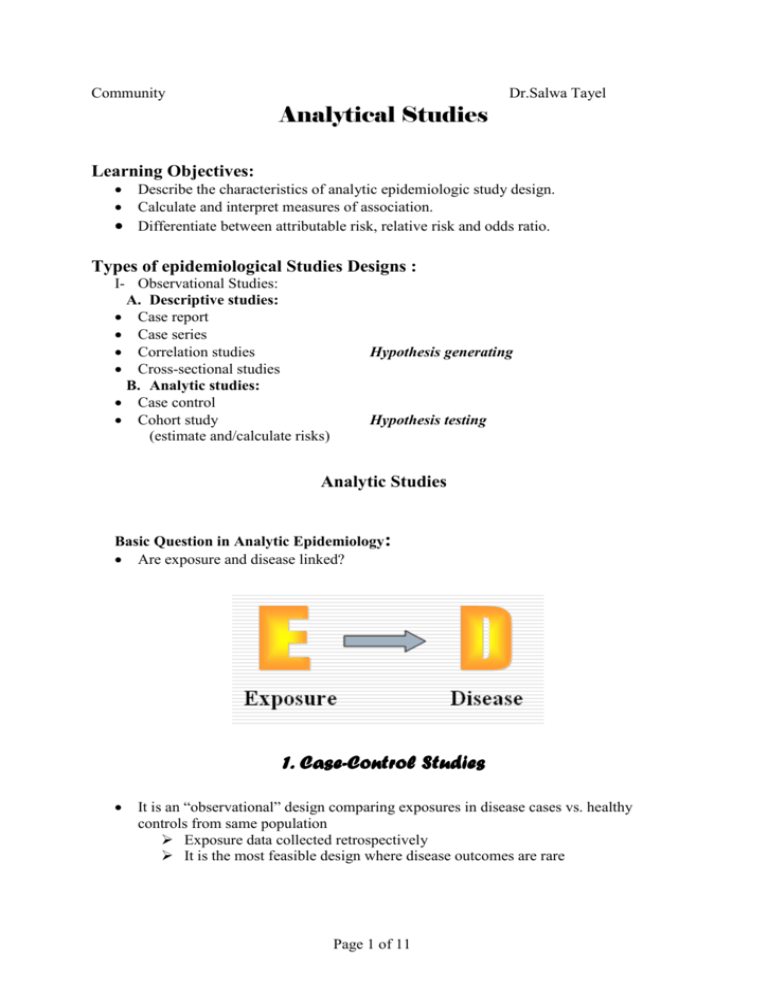



Analytical Studies



Understanding Measures Of Association Or Risk Odds Ratio Communitymedicine4all




Case Control Study Wikipedia




Research Techniques Made Simple Interpreting Measures Of Association In Clinical Research Sciencedirect
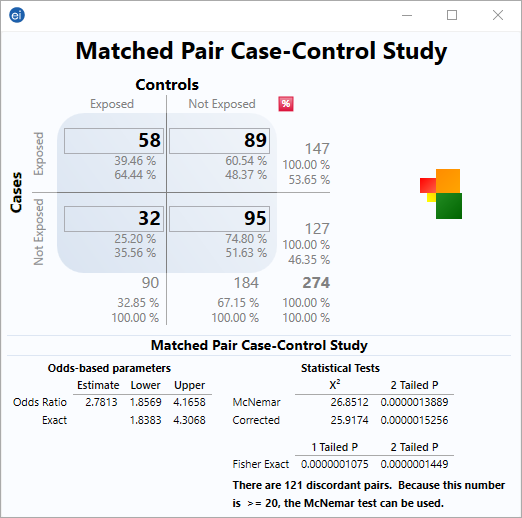



Matched Pair Case Control Statcalc User Guide Support Epi Info Cdc
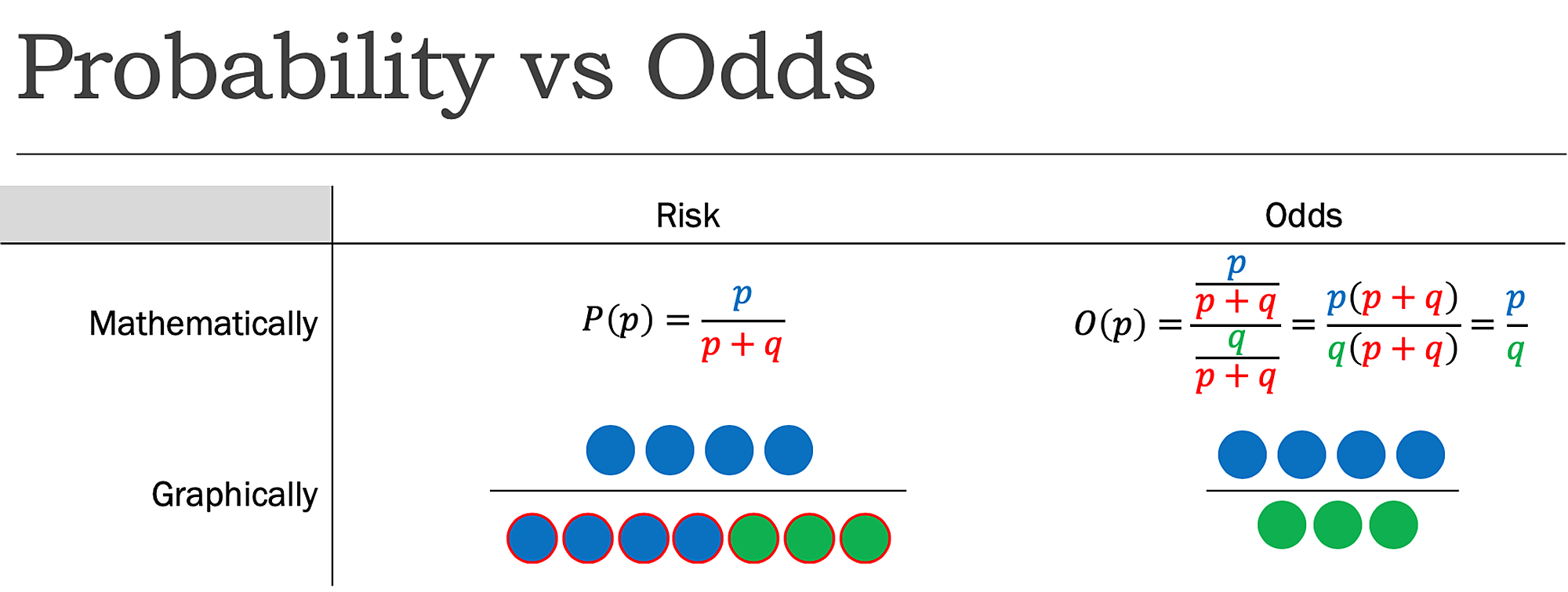



Cureus What S The Risk Differentiating Risk Ratios Odds Ratios And Hazard Ratios



2
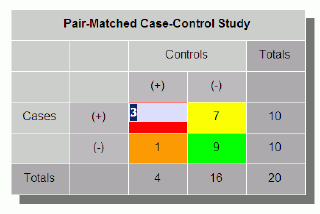



Pair Matched Case Control Table
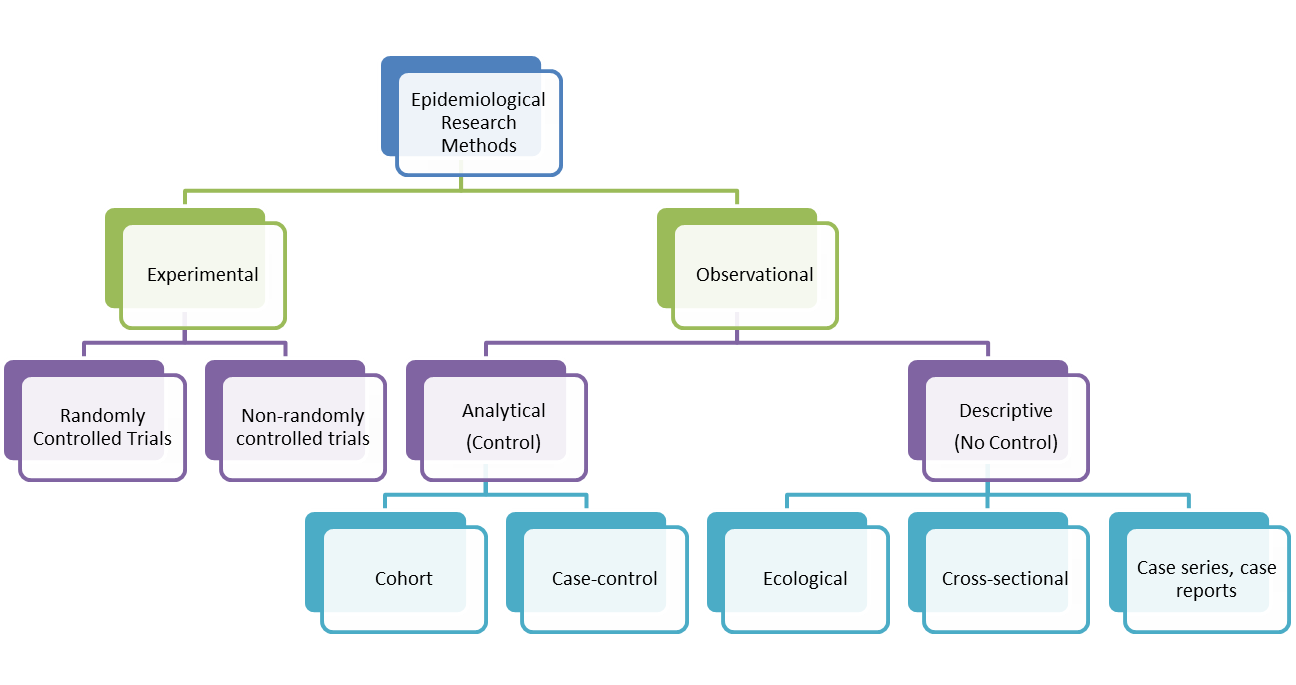



Case Control Studies




Forest Plot Of Relative Risks And Odds Ratios Of Lung Cancer Associated Download Scientific Diagram




Relative Risk And Odds Ratio



2




Pdf What S The Risk Differentiating Risk Ratios Odds Ratios And Hazard Ratios Semantic Scholar




Case Control Cohort Studies Ppt Video Online Download




Glossary Of Research Terminology




Measures Of Effect Relative Risks Odds Ratios Risk Difference And Number Needed To Treat Sciencedirect



0 件のコメント:
コメントを投稿